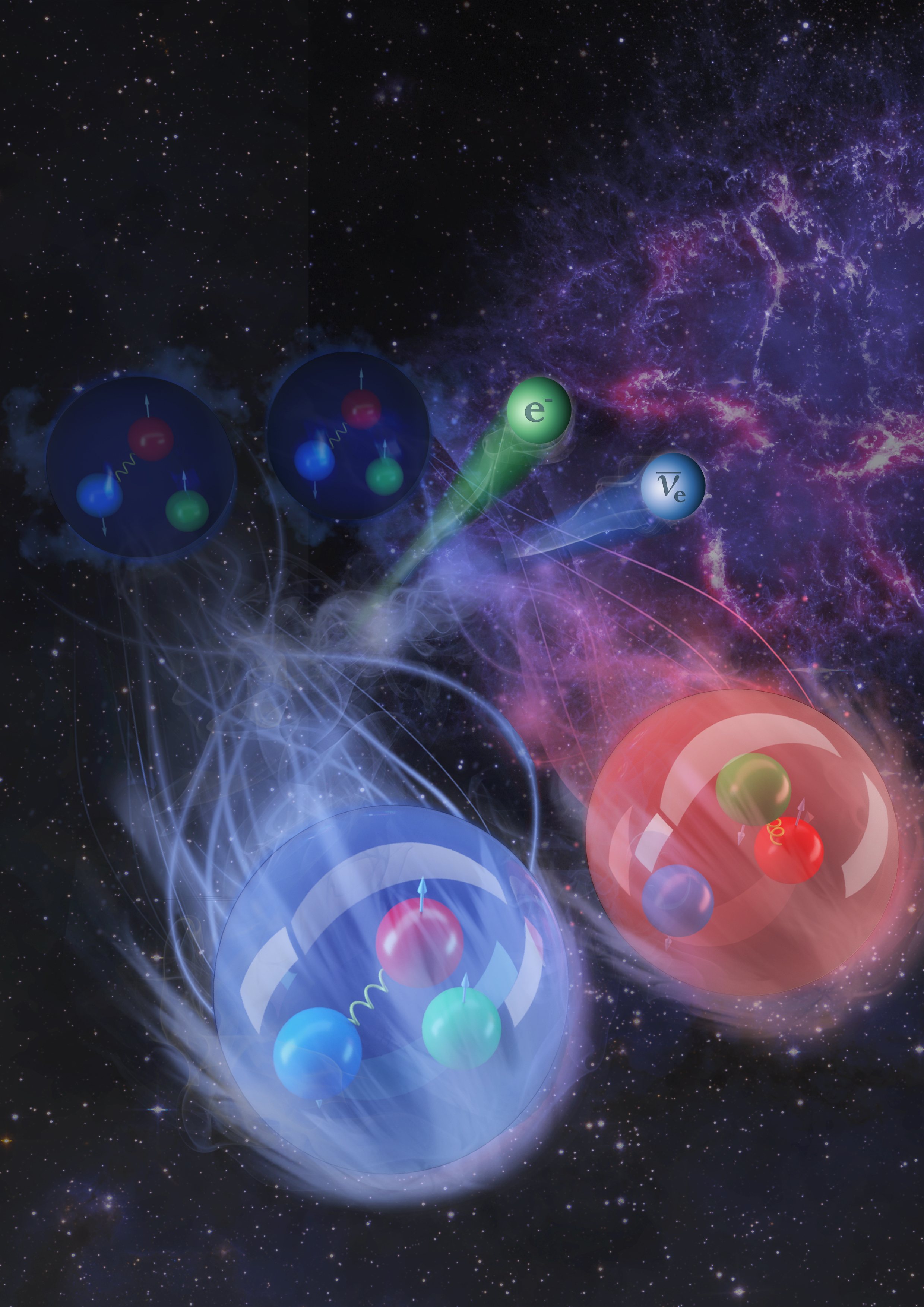β (beta)-decay is the foremost mode of decay for atomic nuclei – a deceptively simple conversion of a neutron into a proton, or vice-versa, and one that drives reactions that create new elements in stellar environments. As a product of the forces at play within neutrons and protons themselves, and the weak interaction, β-decay also holds clues for physics beyond the Standard Model and has been the topic of concentrated study from experimentalists and theorists alike since the early 1900s.
However, an irksome mystery has withstood concerted scrutiny from physicists since the first characteristics of β-decay began to resolve: the predicted rate of β-decay for neutrons bound within nuclei was significantly slower than what was observed experimentally.
<First-principles calculations show that strong correlations and interactions between two nucleons slow down beta decays in atomic nuclei compared to what’s expected from the beta decays of free neutrons. This impacts the synthesis of heavy elements and the search for neutrinoless double beta decay. Caption: Oak Ridge National Laboratory press release. Credit: Andy Sproles/Oak Ridge National Laboratory, U.S. Dept. of Energy>
Historically, particle and nuclear astrophysicists tackling β-decay computations reconciled this discrepancy by implementing systematic modulation called ‘quenching’ – a mathematical workaround that altered the fundamental constant at the heart of the calculation, compared to that of the free neutron, and provided an accurate (if somewhat ad hoc) method for realigning theoretical models with real-world experimental results.
However, an international collaboration that includes several members from TRIUMF’s Theory Department today published results that may dispel this mystery surrounding β-decay rates and potentially eliminates the need for quenching in β-decay rate calculations. In a new paper titled “Discrepancy between experimental and theoretical β-decay rates resolved from first principles,” published in Nature Physics the collaboration details an accurate ab initio approach for predicting bound-neutron β-decay rates.
By studying computations of β-decay from a variety of light and medium-mass nuclei up to 100Sn, the group was able to demonstrate that the ‘quenching effect’ was largely a product of the interaction between the weak force and two nucleons, as well as interactions within the nucleus itself. This departure from single-nucleon weak force computations was enabled in part by new theoretical developments made by the collaboration, as well as the high-powered computational capacity of several supercomputers including Titan at ORNL and machines at LLNL and Compute Canada.
The group’s theoretical calculations were found to be consistent with experimental data from studies on β-decay in a variety of species up to and including 100Sn, indicating that their new methodology effectively reconciles the need for quenching the fundamental constant in that reaction. TRIUMF’s Theory contributors, Peter Gysbers (University of British Columbia/TRIUMF Ph.D. student), Jason Holt, and Petr Navrátil, together with recent TRIUMF postdoc Ragnar Stroberg (now at University of Washington) were responsible for the majority of the β-decay computations of lighter nuclei leading up to the 100Sn mark.
These results may serve to improve how physicists characterize heavy element synthesis in neutron star mergers and to improve predictions for the predicted neutrino-less double-β-decay, where an analogous quenching puzzle remains a source of uncertainty in the study of neutrino mass.
You can read more about the paper in this press release from the Oakridge National Laboratory.
Congratulations to TRIUMF Theory and the entire research collaboration!
